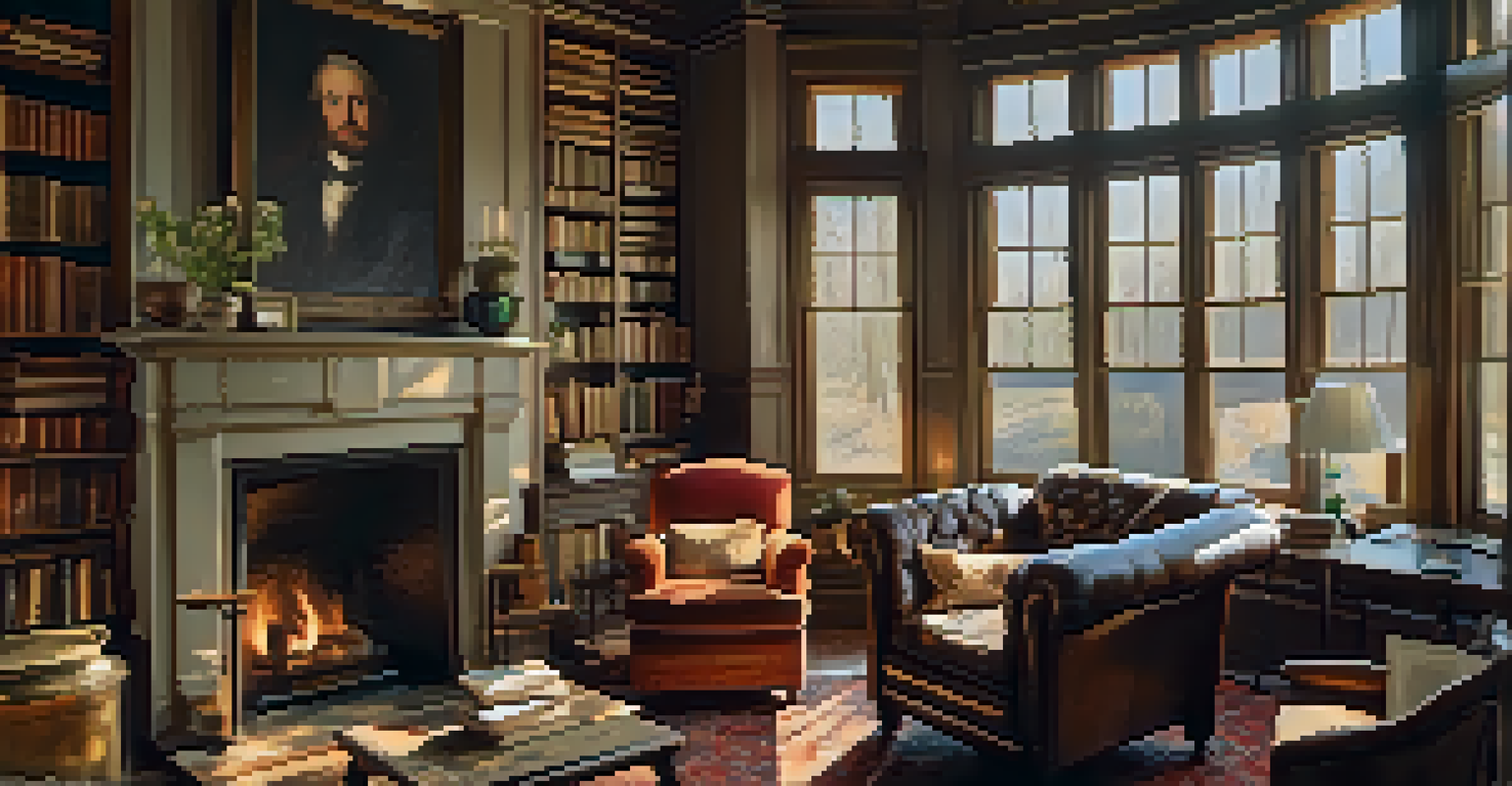Marketing Strategies for Historic Properties on the Market

Understanding the Unique Appeal of Historic Properties
Historic properties offer a charm and character that often can't be replicated. Their unique architecture and rich stories can draw in buyers looking for something special. Understanding this appeal is the first step in crafting targeted marketing strategies.
Historic preservation is the ultimate form of recycling.
Buyers of historic homes often seek more than just a place to live; they want a connection to the past. Highlighting the historical significance and unique features of the property can create an emotional connection that motivates potential buyers.
Additionally, showcasing the property's history can set it apart from standard listings. Using storytelling in your marketing materials can help buyers envision their lives in these homes, increasing their interest and engagement.
Leveraging Social Media for Wider Reach
Social media platforms are powerful tools for reaching a broader audience when marketing historic properties. High-quality images and engaging content can capture attention and spark interest. Platforms like Instagram and Facebook allow you to showcase the beauty and history of these homes with just a few clicks.

Creating posts that tell the story of the property, share restoration projects, or highlight historical events associated with it can engage potential buyers. Using hashtags related to historic homes can also help you connect with a niche audience that appreciates these unique properties.
Historic Homes Connect Buyers to Past
Emphasizing the historical significance and unique features of a property fosters emotional connections with potential buyers.
Additionally, consider using live video tours or virtual open houses to attract buyers who may not be able to visit in person. This modern approach allows you to showcase the property's charm while reaching potential buyers from anywhere in the world.
Creating Compelling Property Listings
A well-crafted property listing is your first chance to make an impression. Instead of just listing features and square footage, focus on storytelling. Describe the unique architectural elements and share anecdotes or historical facts that highlight the property's character.
The past is never dead. It’s not even past.
Using descriptive language can help potential buyers visualize themselves in the space. Share details about the craftsmanship, materials used, and any renovations that respect the property's history while improving functionality.
Don't forget to include high-quality photos that capture the essence of the property. Consider hiring a professional photographer who specializes in historic homes to ensure that your listing stands out in a crowded market.
Highlighting Community and Neighborhood Benefits
When marketing historic properties, it's essential to highlight not just the home itself but also the surrounding community. Many buyers are drawn to historic homes because of the charm and vibrancy of the neighborhoods they reside in. Provide information about local amenities, schools, parks, and cultural attractions that contribute to the area's appeal.
Sharing information about local events and historical significance can also engage potential buyers. This not only highlights the lifestyle they could enjoy but also paints a picture of a community that values its heritage.
Social Media Boosts Property Visibility
Utilizing social media platforms effectively can showcase the beauty and history of historic homes to a wider audience.
By emphasizing both the property and the neighborhood, you create a well-rounded marketing strategy that speaks to buyers' desires for community and connection.
Utilizing Traditional Marketing Methods Effectively
While digital marketing is essential, traditional methods still hold value, especially for historic properties. Brochures, flyers, and direct mail can effectively reach local buyers who may be interested in historic homes but aren't actively searching online.
Consider hosting open houses or historical tours that allow potential buyers to experience the property firsthand. This personal touch can create a lasting impression and foster a deeper connection to the home.
Additionally, partnering with local historical societies or organizations can help promote the property and connect with buyers who have an existing interest in preservation and history.
Building Relationships with Preservation Organizations
Establishing connections with preservation organizations can enhance your marketing efforts. These organizations often have access to buyers who are passionate about historic properties and may be looking for homes to restore or preserve.
Collaborating with these organizations can also provide you with valuable resources. They may offer insights into the local historic market, potential funding for renovations, or guidance on maintaining the property's integrity.
Community Enhances Property Appeal
Highlighting the vibrant community and local amenities surrounding historic properties can attract buyers looking for a lifestyle connection.
By aligning your marketing strategy with preservation efforts, you can attract buyers who appreciate the importance of preserving history while also finding their dream home.
Showcasing Restoration and Renovation Potential
Many buyers of historic properties are interested not just in the home's current state but also its potential. Showcasing restoration and renovation possibilities can significantly enhance your marketing strategy. Share before-and-after photos of similar projects in the area to inspire potential buyers.
Providing information about the historical accuracy of renovations can also reassure buyers about the integrity of the property. Highlighting available resources, such as grants or tax incentives for restoration, can make the prospect more appealing.

Incorporating these elements into your marketing campaign can help buyers see the property as a canvas where they can create their ideal living space while honoring its history.
Engaging Local Influencers and Bloggers
Collaborating with local influencers and bloggers who have an interest in historic homes can extend your reach. These individuals often have dedicated followers who trust their opinions and are eager to discover unique properties.
Consider inviting them for a private tour of the property or hosting an event where they can experience the home firsthand. Their authentic reviews and posts can create buzz and attract potential buyers.
By leveraging the existing audience of local influencers, you can create a more dynamic marketing strategy that resonates with a diverse group of buyers interested in historic properties.